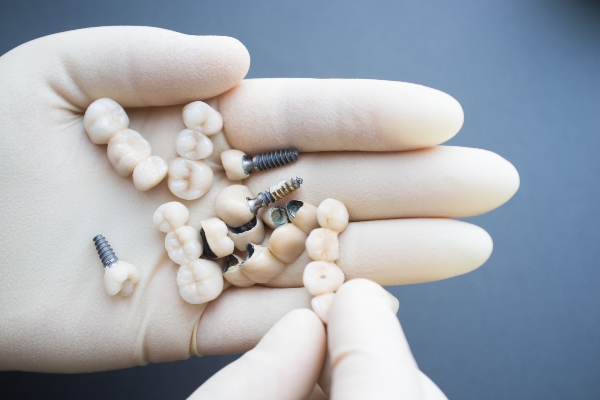 If you have ever gotten a filling or watched someone put in their dentures, you are familiar with the world of dental restorations. Although restorative dentistry focuses primarily on tooth and gum preservation, there is considerable overlap between dental and jaw health. As a result, dental restorations play a significant role in jaw restoration.
If you have ever gotten a filling or watched someone put in their dentures, you are familiar with the world of dental restorations. Although restorative dentistry focuses primarily on tooth and gum preservation, there is considerable overlap between dental and jaw health. As a result, dental restorations play a significant role in jaw restoration.
Dental restoration
To better understand the relationship between the teeth and the jaw, it helps to develop a foundation of knowledge on dental restoration practices.
What are dental restorations?
Most procedures that restore a tooth’s form or function fall under the umbrella of restorative dentistry. While these reconstructions can provide immense aesthetic benefits, enhanced appearance is not their primary goal.
What are some examples of dental restorations?
Dentists use fillings, the most recognizable type of dental restoration, to plug cavities and prevent the holes from trapping harmful bacteria inside the tooth. Most fillings are composed of metal, composite resin, ceramic, or porcelain. Although metal fillings are the most affordable option, they do not blend in with the surrounding teeth. For a more attractive appearance, patients prefer white filling materials.
Like fillings, crowns and bridges serve an essential purpose: they substantially reduce the risk of infection. Crowns replace natural teeth that have developed decay or disease, taken heavy physical damage, fallen out, or been extracted. Similarly, bridges consist of one primary crown with caps on each side. This bridge of crowns creates a more secure fit for those missing several teeth in one section of the mouth.
Although these procedures provide critical functionality, they often leave patients feeling happier and more confident. Combined with jaw restoration, dental restorations can dramatically change the look and feel of a patient’s smile.
Jaw restoration
From minor corrections to major surgery, options for correcting dysfunctional jaw joints or obtaining relief from jaw pain are vast. Dental restorations may not treat these issues directly, but the jaw still reaps countless benefits from simple dental restoration practices.
What is the difference between a dental restoration and a jaw restoration?
Dentists provide dental restoration services to patients with gum or tooth abnormalities, especially if those issues impact the patient’s overall health. On the other hand, jaw restoration is often necessary to fix a musculoskeletal problem. Dentists only involve the jaw if essential as a prerequisite to providing certain forms of dental restoration or if a patient needs dental implants.
How can you restore your jaw with dental restorations?
Dental implants reinforce the jaw by attaching securely to the joint. In some cases, a dentist may require that a patient get a jaw bone graft before getting an implant, as a weak jaw cannot support an implant. Once placed, however, implants improve the patient’s jaw health. These benefits include preventing jaw bone density loss and stabilizing joints that, when misaligned, lead to painful conditions such as TMJ or persistent headaches.
Conclusion
Dental restorations can provide immense benefits for the jaw and play a substantial role in restoring the jaw’s mobility, functionality, and even appearance. For many, dental restorations are the first step toward a stronger, healthier jaw.
Request an appointment or call New York Dental Office at 212-548-3261 for an appointment in our New York office.
Recent Posts
Dental restoration is a term used to describe the process of repairing or replacing damaged, decayed, or missing teeth. Several dental restoration options are available to patients, ranging from simple fillings to more complex procedures such as dental implants and crowns. This article will explore some of the most common dental restoration options available and…
A dental restoration can repair your teeth and improve your smile. Following the recommended aftercare instructions is important to ensure the results last as long as possible. Whether you are getting a filling, a root canal, or a tooth pulled, slacking on aftercare can lead to pain and discomfort. Save yourself some trouble and avoid…
Cracked and chipped teeth can be unsightly and painful, but dental restoration can help. Even a painless chip or crack may become a bigger problem if left untreated. Severe pain, swollen and tender gums, and infection may result. In the worst cases, it will be necessary to extract the broken tooth. There are many ways…



